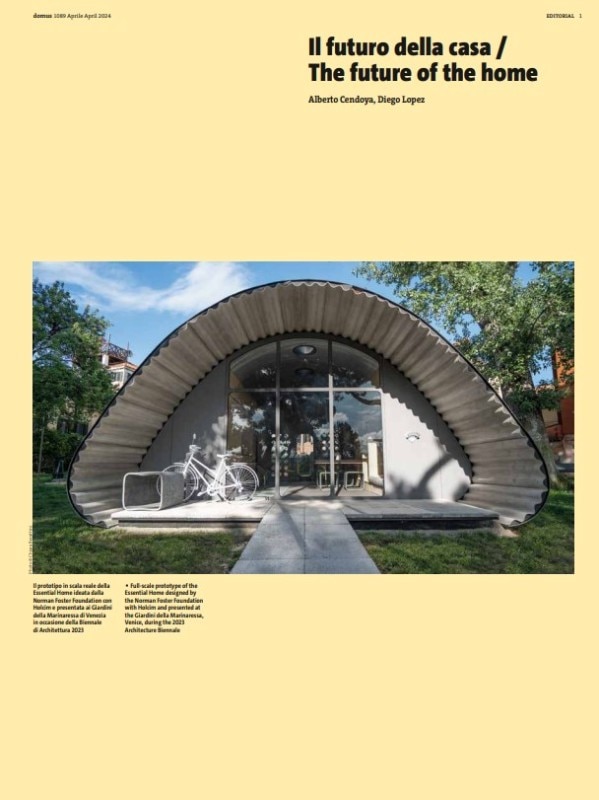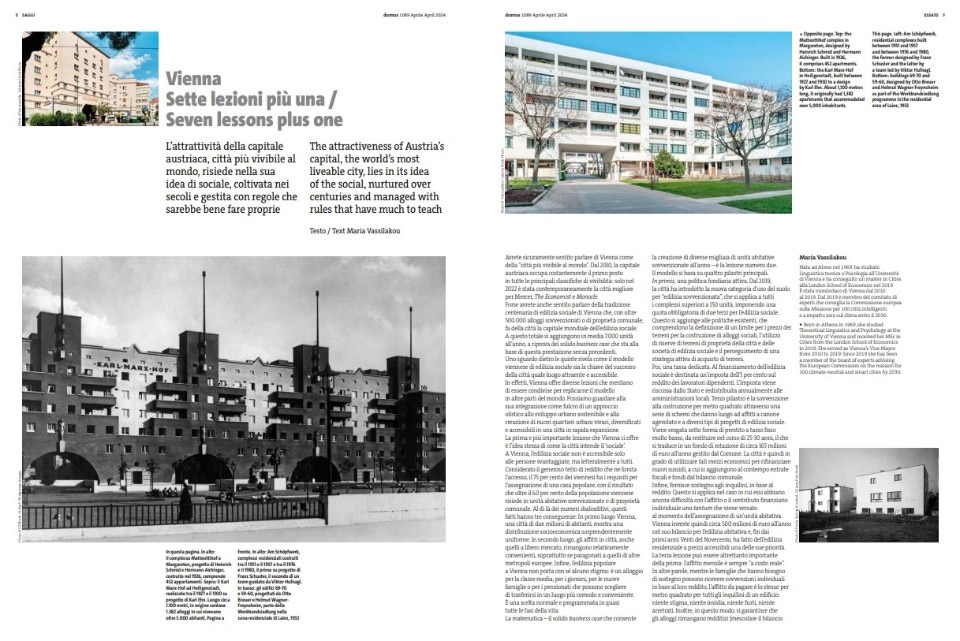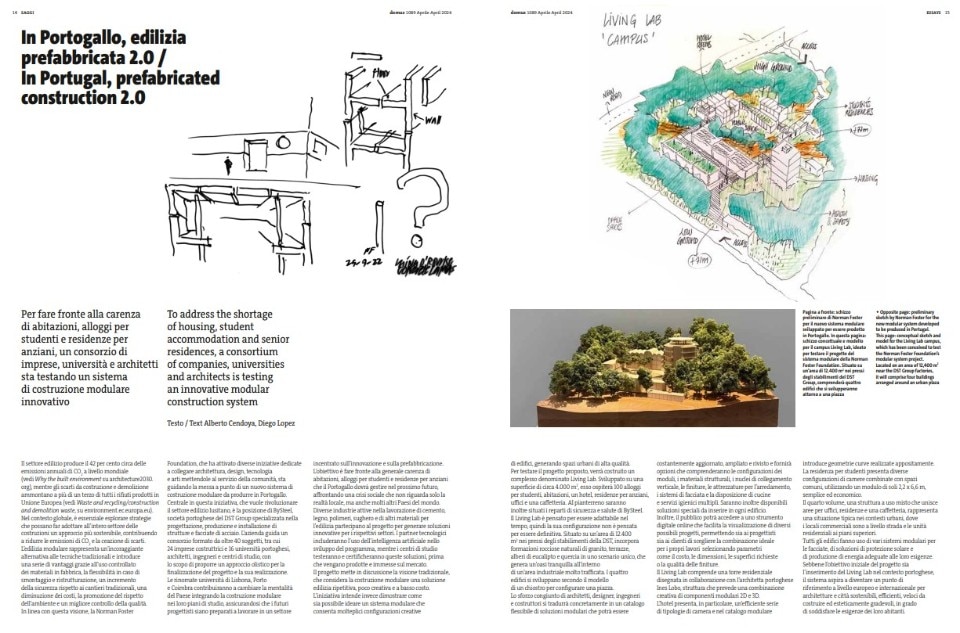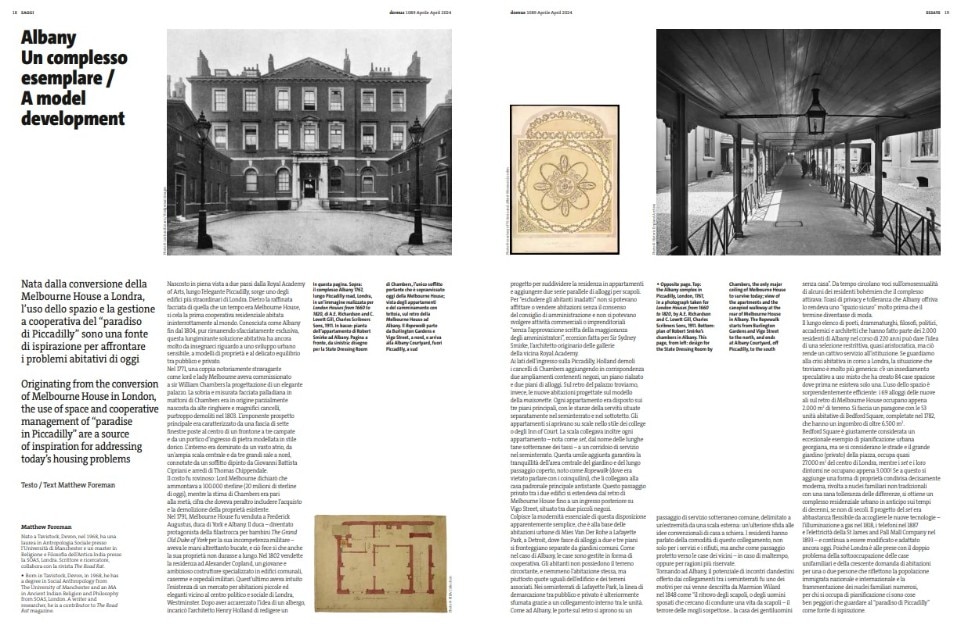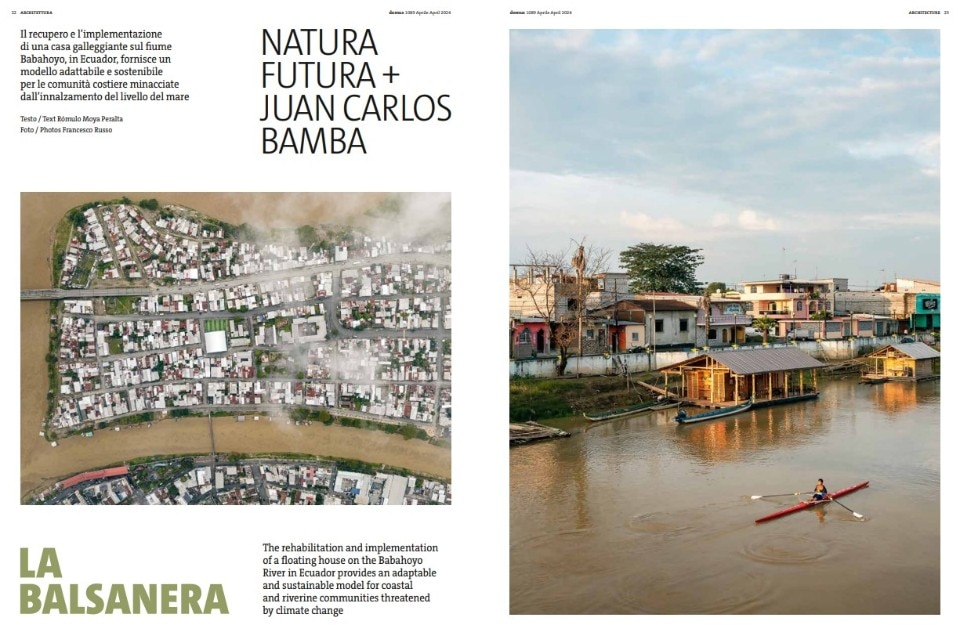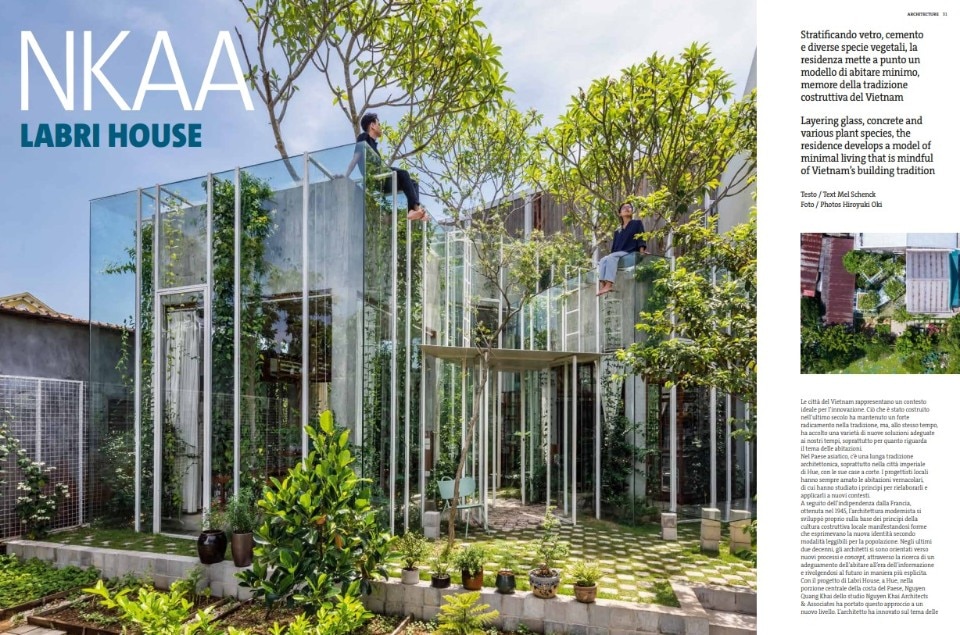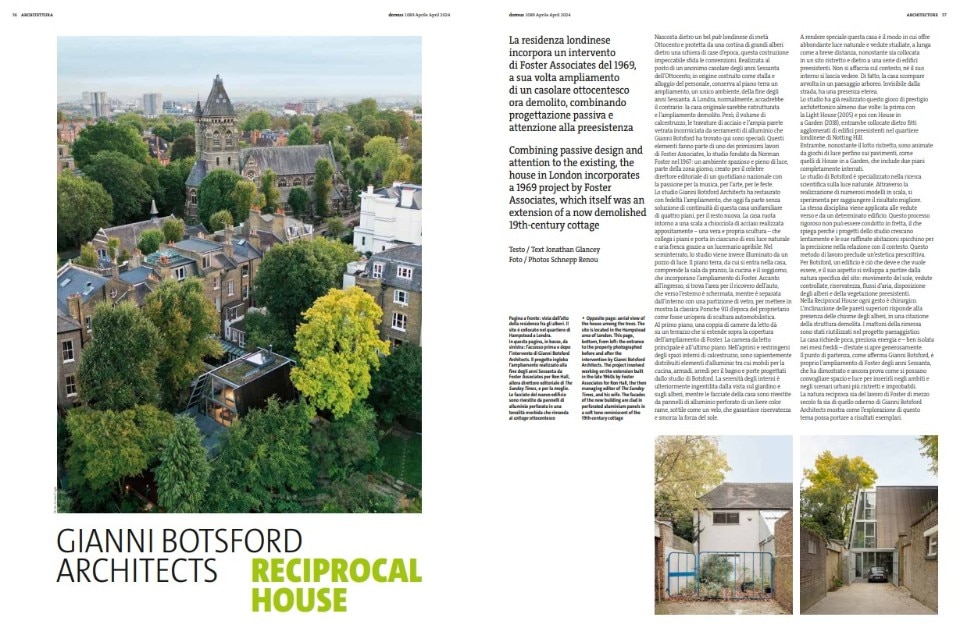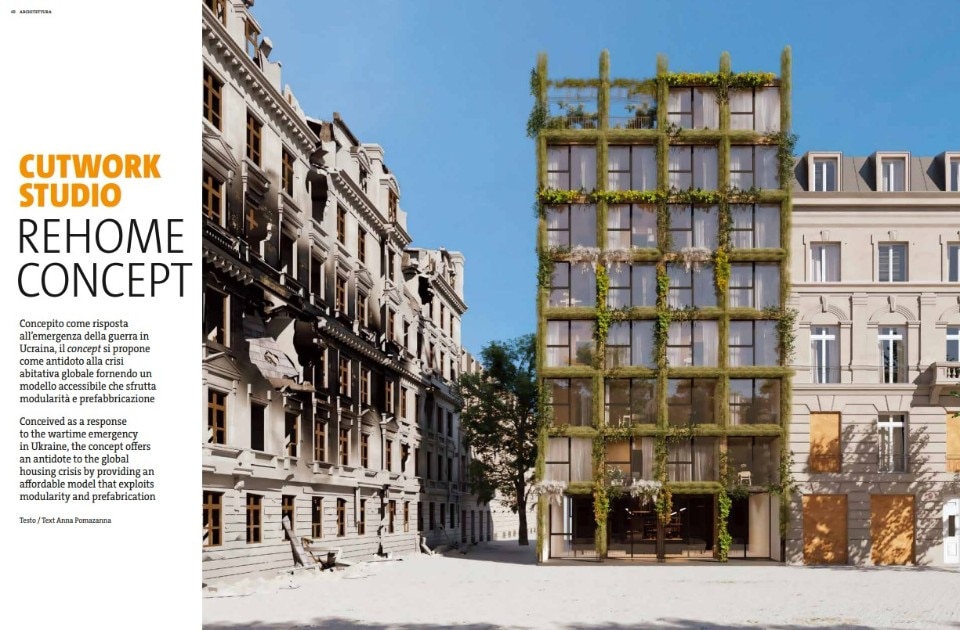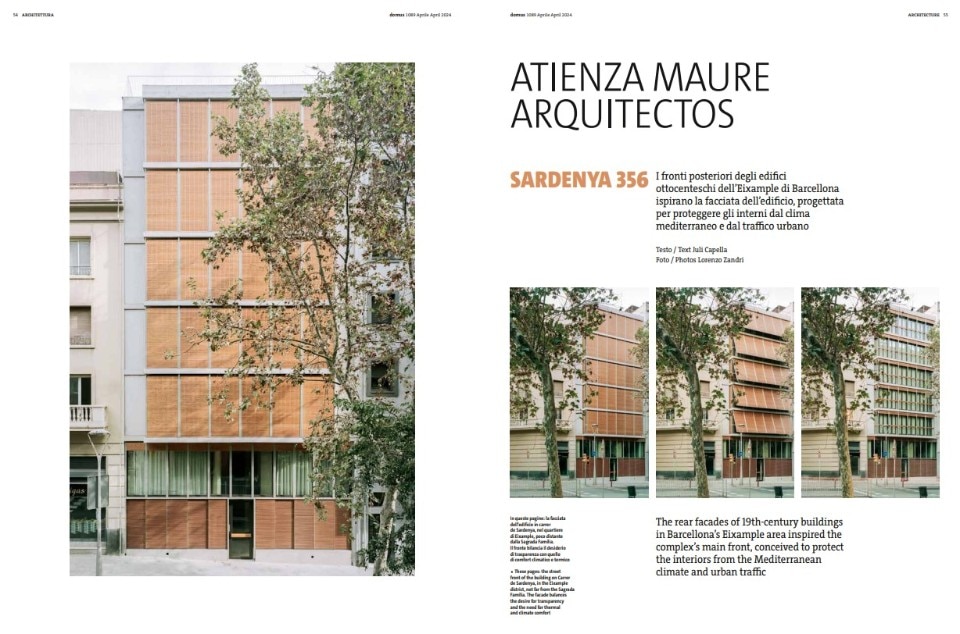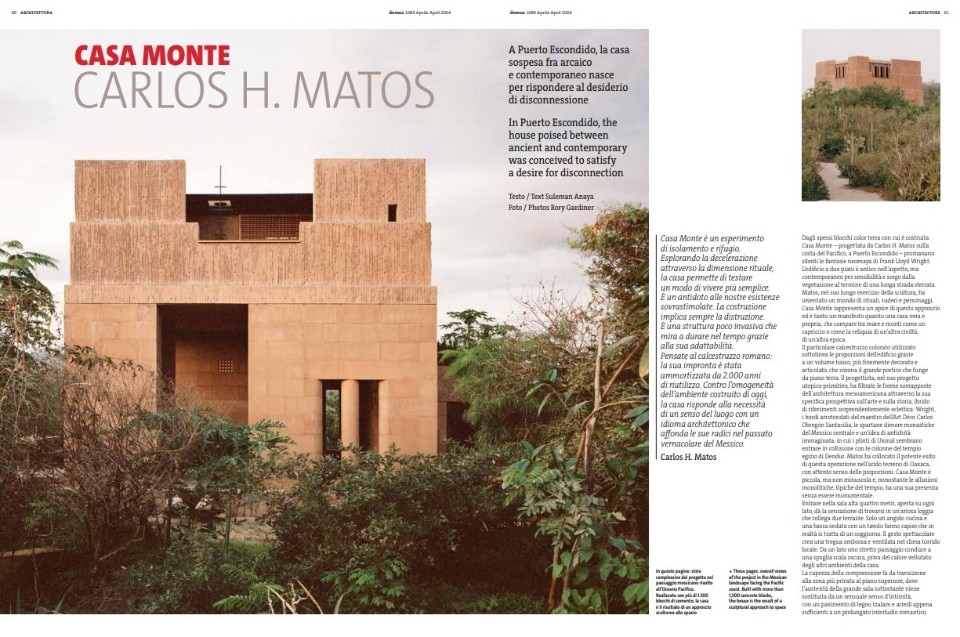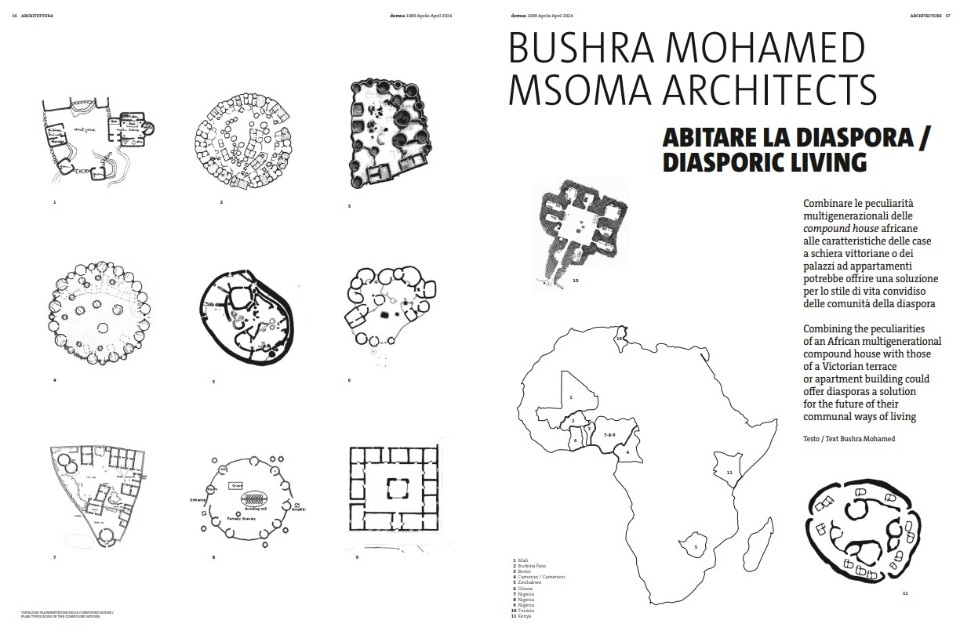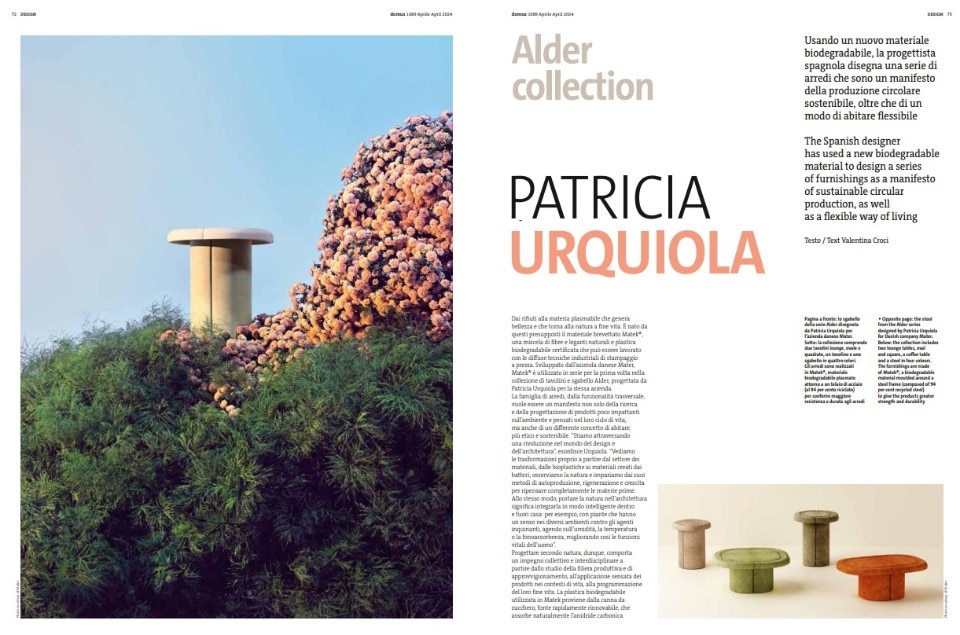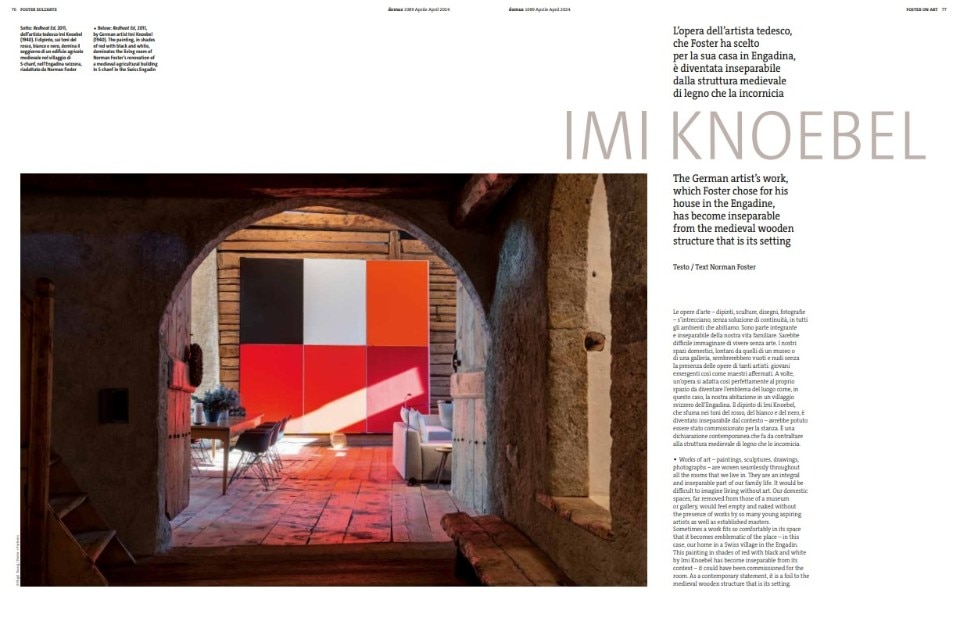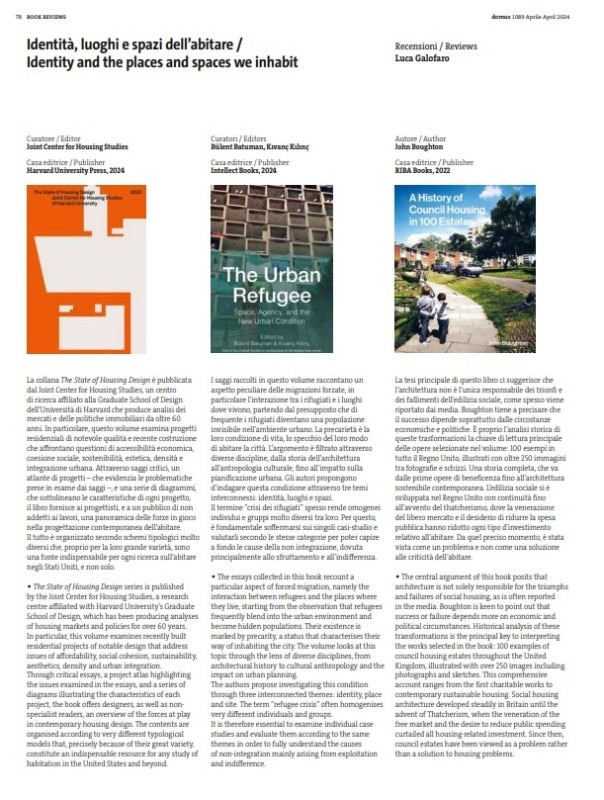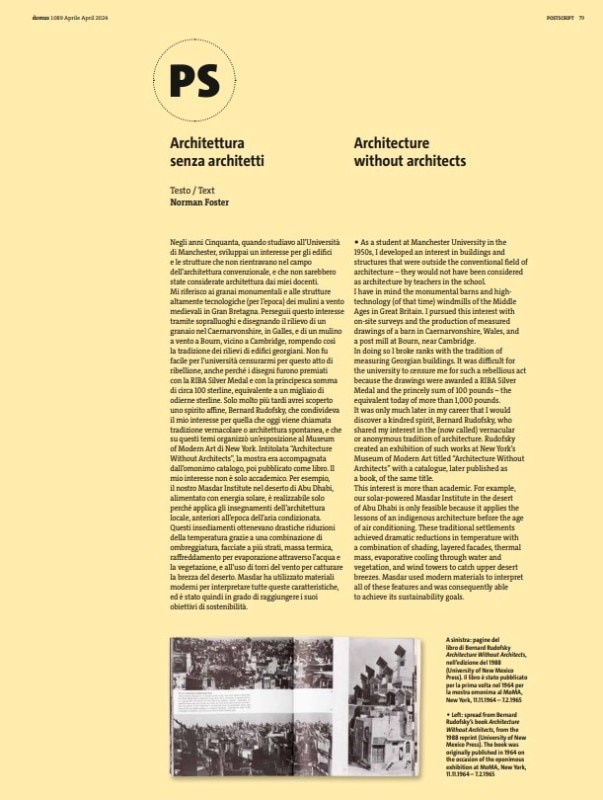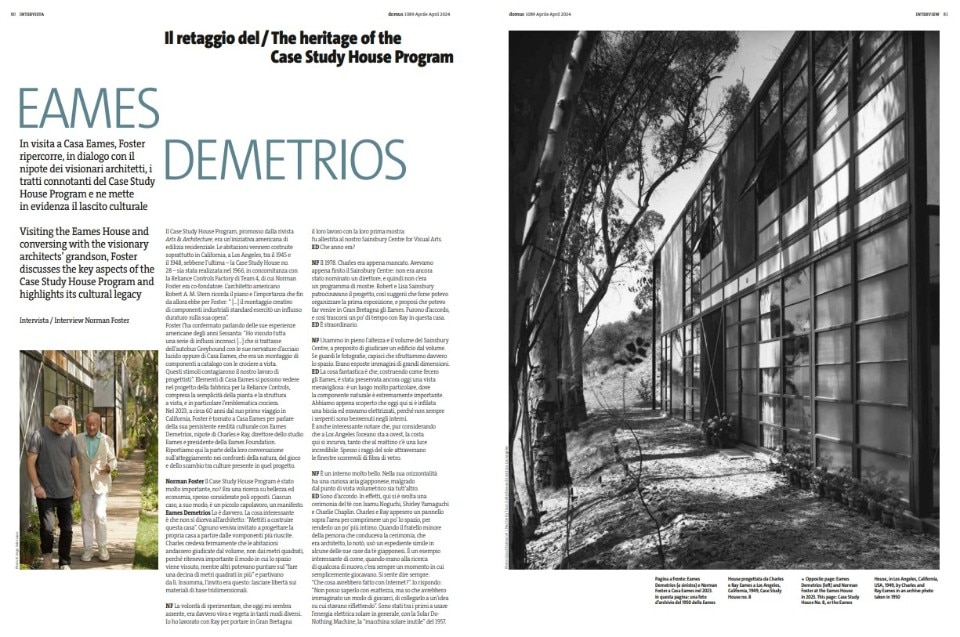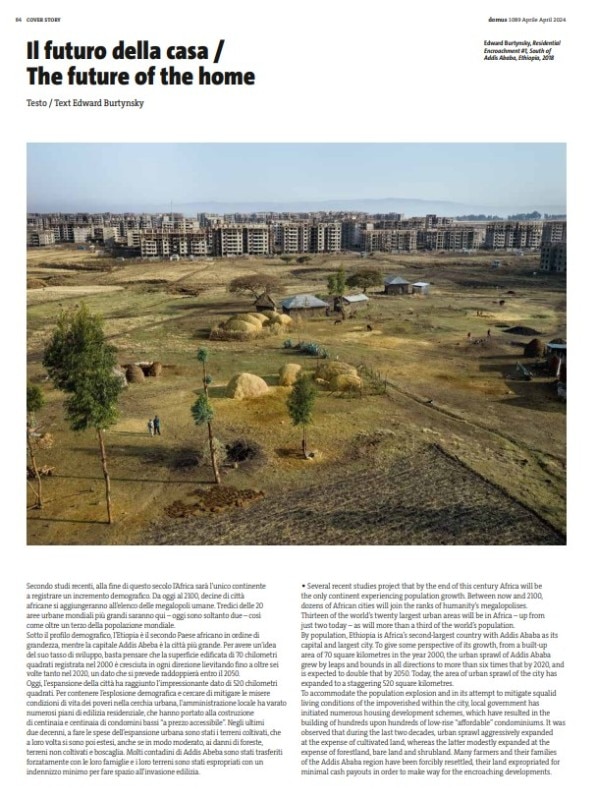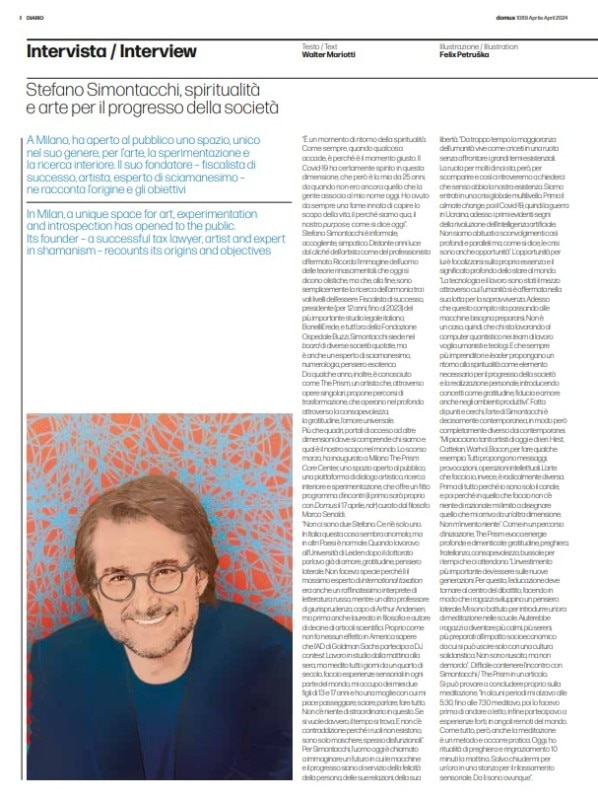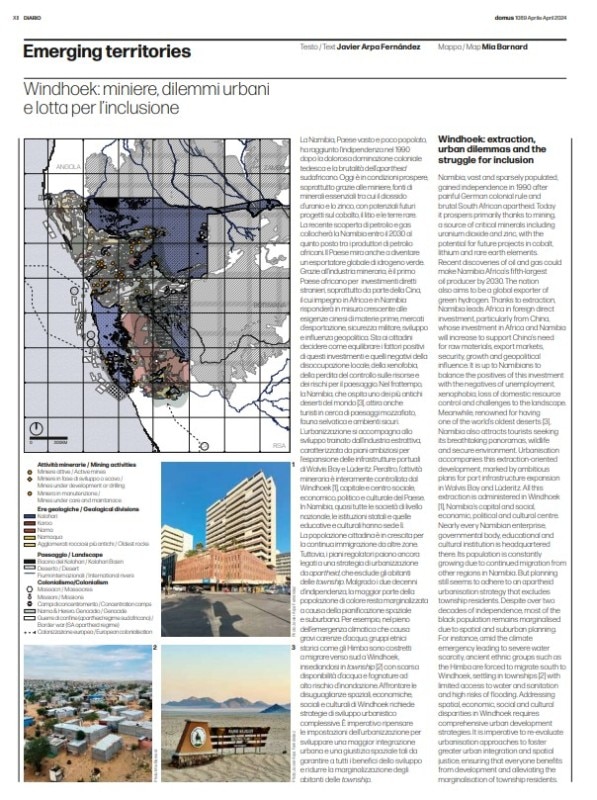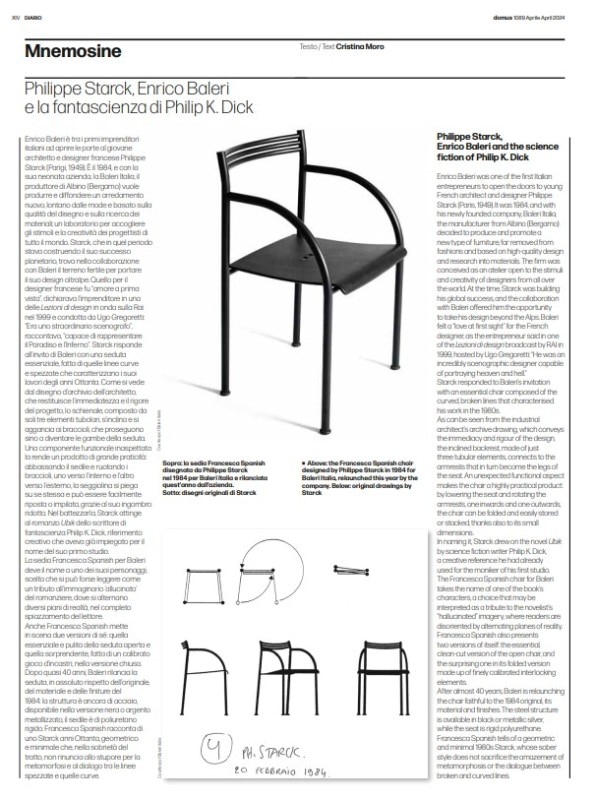“Out of a world population of 8.1 billion people, 1.6 billion live in inadequate housing conditions, according to the United Nations”. Alberto Cendoya and Diego Lopez, from the Architecture and Technology Unit of the Norman Foster Foundation, highlight this harsh reality in the Domus 1089 editorial. The main problem with urban housing is its exorbitant cost, which puts it out of reach for a significant part of the population. In addition, according to UN-Habitat, recent natural disasters and conflicts have displaced 103 million people, pushing them into refugee status and forcing them to live for long periods in makeshift structures that are intended to be temporary.
Over the past two centuries, numerous efforts have been made to address the fundamental right to adequate housing through mass production. In his article, Matthew Foreman chronicles a number of significant milestones. This compilation includes projects categorized by innovations in prefabrication methods, materiality, modularity, and transportability. These projects stem from the findings of the Essential Homes research, which was presented at the 2023 Venice Architecture Biennale by the Norman Foster Foundation and Holcim.
The three essays describe three exemplary case studies across diverse domains. Maria Vassilakou, who served as deputy mayor of Vienna from 2010 to 2019 and is an expert on the EU Committee for 100 Climate-Neutral and Smart Cities by 2030, offers insights into the Austrian capital’s journey. Recognized by multiple sources as the world’s most livable city, Vienna is a beacon of inclusivity in housing policy. Conversely, Alberto Cendoya and Diego Lopez detail the exploration of an innovative modular building system by the Norman Foster Foundation in Portugal, in collaboration with a consortium of companies, designers, and universities. Meanwhile, Matthew Foreman delves into the history of Melbourne House in London, an eighteenth-century aristocratic mansion transformed in 1802 into a series of cooperatively managed housing units. This historical narrative provides a compelling precedent that may inspire contemporary solutions to housing challenges.

The Architecture section brings together a number of significant experiences, including completed projects and concepts. In Ecuador, Natura Futura and Juan Carlos Bamba renovated and implemented a floating house on the Babahoyo River. Called the Balsanera, this structure serves as both a residence and a productive space, embodying resilience as it adapts to the movement of the water and providing a blueprint for communities facing the threat of rising seas. In Vietnam, in the city of Hue, the Labri House by Nguyen Khai Architects & Associates (NKAA) unfolds on a 100-square-meter site characterized by a series of monofunctional blocks. This experiment in minimalist living pays homage to local traditions while using elements such as glass, concrete, and vegetation to minimize energy consumption. In London, Gianni Botsford Architects are building a four-story passive house on top of a 1969 Foster Associates intervention. Meanwhile, on Manda Island, Kenya, PAT. architetti associati and Ferdinando Fagnola’s Falcon House draw inspiration from iconic modernists such as Craig Ellwood, Paul Rudolph, and Pierre Koenig, integrating steel and pre-existing structures. However, this endeavor prompts reflection on the colonial legacy that underpins its inception.
Building Labri House was like growing a forest. It rose up naturally like a tree from the ground. The house is a model for minimal living, which means producing less waste and less CO2. It meets the basic needs of its inhabitants, showing that a simple lifestyle is possible.
NKAA
Furthermore, Cutwork Studio’s ReHome, conceived in response to the housing crisis in Ukraine triggered by the Russian invasion, offers a promising concept applicable to urban environments striving for densification, capable of accommodating volumes of up to six stories. Atienza Maure Arquitectos carries out a project in the heart of Barcelona, using a small building to explore the interplay between climate and noise pollution, mediated by a facade inspired by a traditional solution. Meanwhile, architect and sculptor Carlos H. Matos embarks on an experiment that aims to make it easier to disconnect from everyday life. His project is to create a structure that combines different suggestions and references to develop a minimal form of living. In addition, Bushra Mohamed of MSOMA Architects proposes a fusion of multi-generational African compound houses with Western architectural typologies. This innovative approach aims to respond to the unique lifestyles of diaspora communities in the UK.
The Design section features Patricia Urquiola’s Alder collection for Mater, a range of furniture that seamlessly blends circular production principles with flexible living. In Foster on Art, British architect Norman Foster highlights German artist Imi Knoebel’s installation Redheat Ed (2011) for its remarkable artistic merit. In Book Reviews, Luca Galofaro discusses three books – one published by the Joint Center for Housing Studies at Harvard’s Graduate School of Design, one by Bülent Batuman and Kıvanç Kılınç, and another by John Boughton – that deal respectively with the state of housing in the United States, the housing conditions of refugees, and the history of public housing in Britain. In Postscript, Foster revisits a central work of architectural theory from 1964 – Bernard Rudofsky’s Architecture without Architects, both book and celebrated exhibition at MoMA New York.
The issue concludes with an interview with Eames Demetrios, grandson of Charles and Ray Eames, who discusses the legacy of the Case Study House program with Norman Foster.
In Cover Story, Canadian photographer Edward Burtynsky recalls the making of the cover photo. Captured in the Ethiopian capital, Addis Ababa, the image captures the palpable traces of the city’s rapid demographic shifts and urban development.
In the Diario section, editorial director Walter Mariotti meets tax lawyer and artist Stefano Simontacchi to talk about The Prism, his new space in Milan dedicated to spirituality. In Emerging Territories, Javier Arpa writes about the prosperity of Namibia and its capital, Windhoek, amidst mining, urban dilemmas and struggles for inclusion. For Human Design, Paola Carimati chooses the Laboratorio Roma050 initiative, a project by Stefano Boeri commissioned by Mayor Roberto Gualtieri and involving eight under-35 studios led by Matteo Costanzo and Eloisa Susanna. In Graphics , Francesco Franchi presents a project by Kunel Gaur that combines typography and brutalism. In Mnemosyne, Cristina Moro talks about the re-edition of the Spanish chair Francesca, designed by Philippe Starck in 1984 for Baleri Italia and relaunched by the company this year, and its relationship to the novel Ubik by science fiction writer Philip K. Dick.
In Diario is also a special feature spotlighting Milano Design Week 2024, with editorial director Walter Mariotti conducting an exclusive interview with Claudio Feltrin, president of FederlegnoArredo. In these pages, readers will also discover the story of 25 selected previews (+1) of the events and projects we cannot wait to see.




